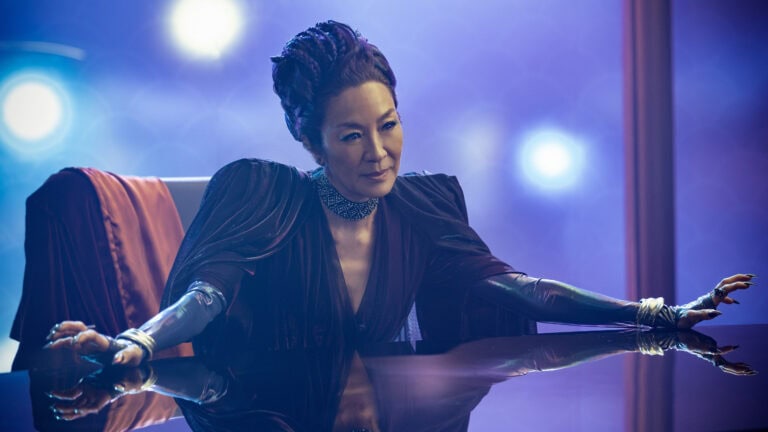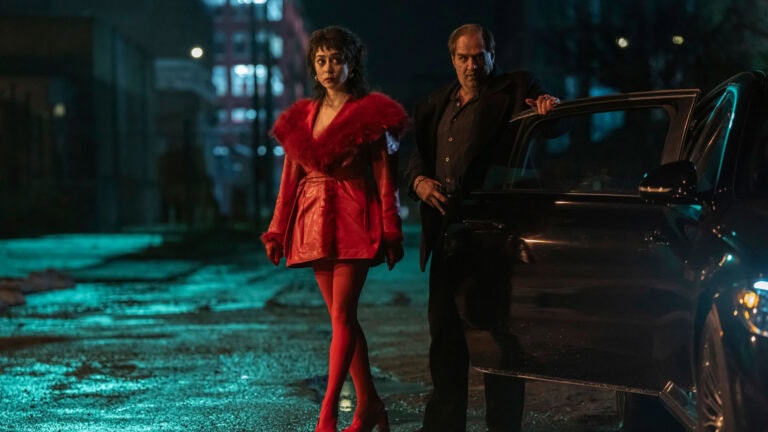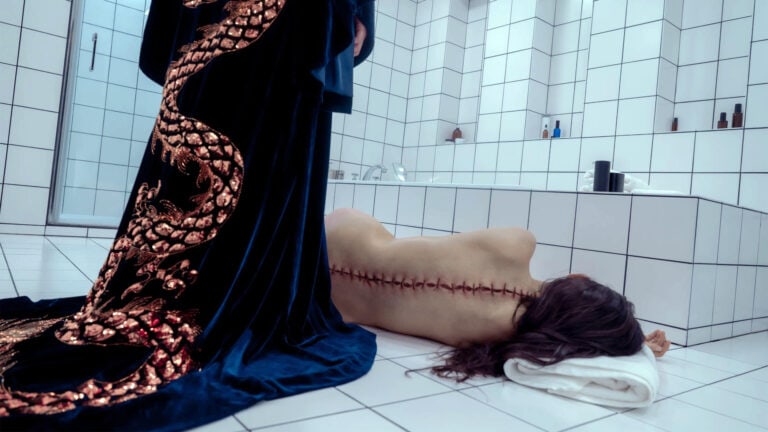Shawna Trpcic: The Costumes of The Mandalorian Season Three
Costume Designer Shawna Trpcic reflected on her experience dressing the galaxy in the third season of The Mandalorian.
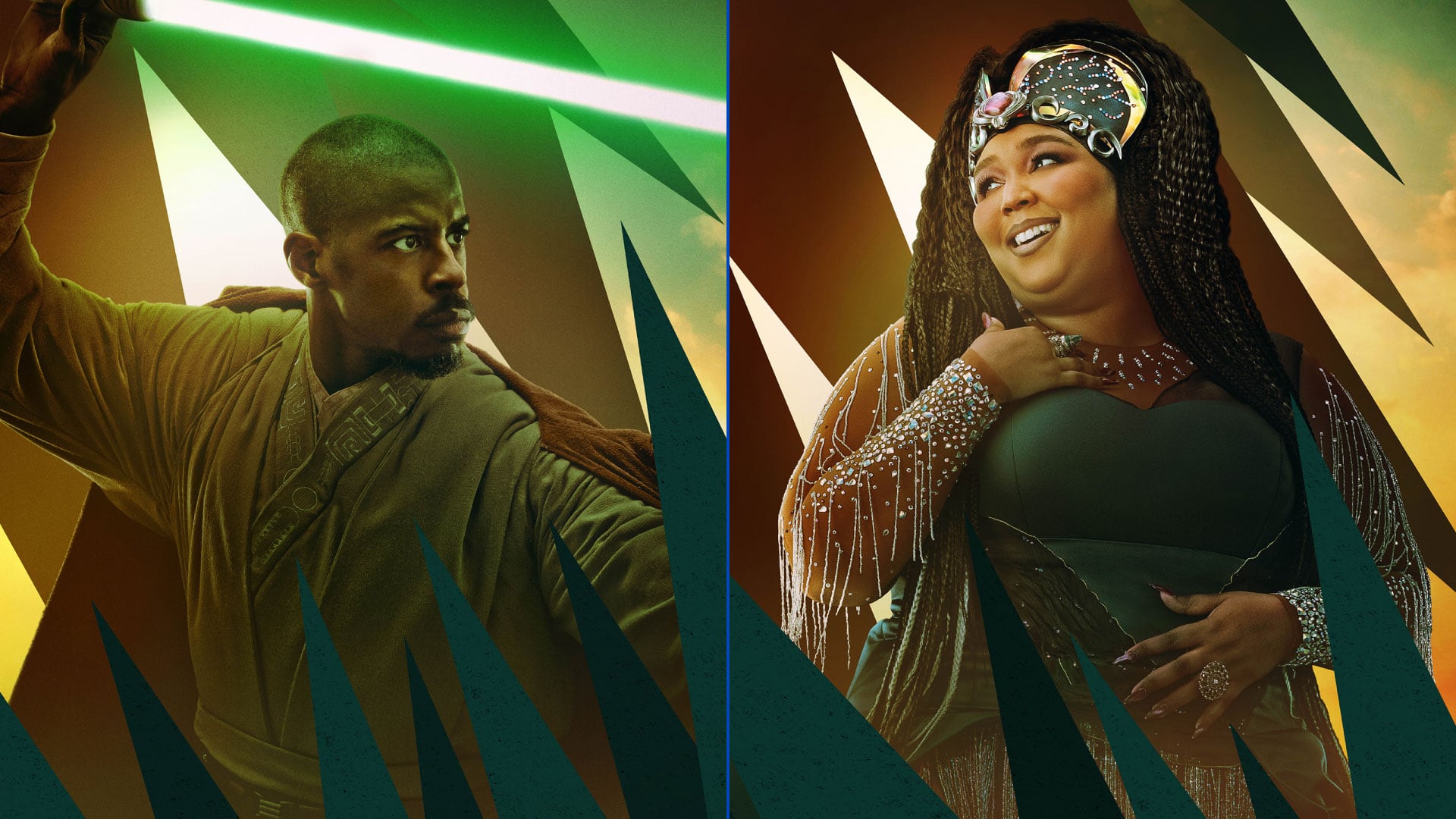
Costume design is a crucial part in the creation of a character, especially when it comes to Star Wars. What makes a hero or villain so attractive and iconic to the audience is influenced by the incredible authenticity and detail that originates from the artistry of costume designers in collaboration with hair designers, props, and makeup artists that bring these characters to life from script to screen. The Mandalorian (and the Mandoverse as a whole) has been a testament to that, especially Season Three which blossomed with a myriad of new characters. Costume Designer Shawna Trpcic reflected on her journey working on the latest season of The Mandalorian, exploring the inspiration and technicality behind the fabrication of so many iconic costumes set in a galaxy far, far away.
Trpcic began our conversation by explaining the challenges and scale that The Mandalorian Season Three brought to the table. Up until the latest season of the show, everything remained relatively small in terms of the amount of characters that appeared on screen, most likely due to the challenges that the COVID pandemic brought to the industry and TV budget constraints. However, in the third season of The Mandalorian Jon Favreau was able to bring density to the already established series. “We treat every background artist as a principal character because in Star Wars you see everybody … the pace is slower, you’re not zooming by people. I wasn’t willing to compromise on anybody because, you know, Boba Fett was once a background character. Whether it’s ninety Mandalorians or a hundred people in the background on Nevarro during a pirate fight, every single person had to be done to perfection,” Trpcic said. The process started with mood boards she created in collaboration with Assistant Designer Elissa Alcala, which would then be handed to costumers Gio Kendall and Fredrick Faith as they would start pulling together colors and textures. Trpcic would then come in and join fittings. The Costume Designer confessed that the scale of Season Three was without a doubt the biggest challenge for her team, but it was still the same passion and love that was carried from the first two seasons.
High Magistrate Greef Karga
Probably one of the most visually flourishing places in The Mandalorian was Nevarro, once a lawless world filled with bounty hunters and Imperial Remnant now grown into an independent trade port under the leadership of Greef Karga (Carl Weathers). Whereas the planet and its inhabitants have been portrayed with darker tones in the first season (with Season Two marking a pacifist transition, which Shawna Trpcic designed), the latest episodes of the show have brought such a vibrant change through the fabrication of new gorgeous costumes for the Nevarro population. Representing this momentous socio-political progress is High Magistrate Karga—the character trading his old tactical look for a regal red and gold tunic. Shawna Trpcic explained that she wanted to blend the pomp and circumstance represented by the work Ruth Carter did in Black Panther with that of the British Parliament incorporating bright reds, all the while keeping the Star Wars tradition with the magistrate chain (already established in the prequels with Count Dooku) and the cummerbound. “I worked with concept artists Imario [Susilo] and Brian [Matyas] on some sort of Star Wars shapes. Then Kevin [Ochoa], my shopper, brought me some fabrics until we nailed it down, and Luis [Norato], my tailor, worked out the drape and pattern. I didn’t want to three dimensionally print as they do in current superhero movies because I’m trying to avoid any techniques that are modern; I wanted to sew and stitch in the pattern rather than print it.” Trpcic then explained the technicality of getting the droids to hold Karga’s cape: “We had to find some fabric that would be light enough to give me the flow but heavy enough to give me the drape and then light enough where I could create a structure for the droids to carry. And that’s when Marcus [Napuri] came in and built this understructure with Luis to hold it up and work with the [CGI] droids. It was a lot of working out the whole engineering of it all into the design, but the end result was magnificent.”
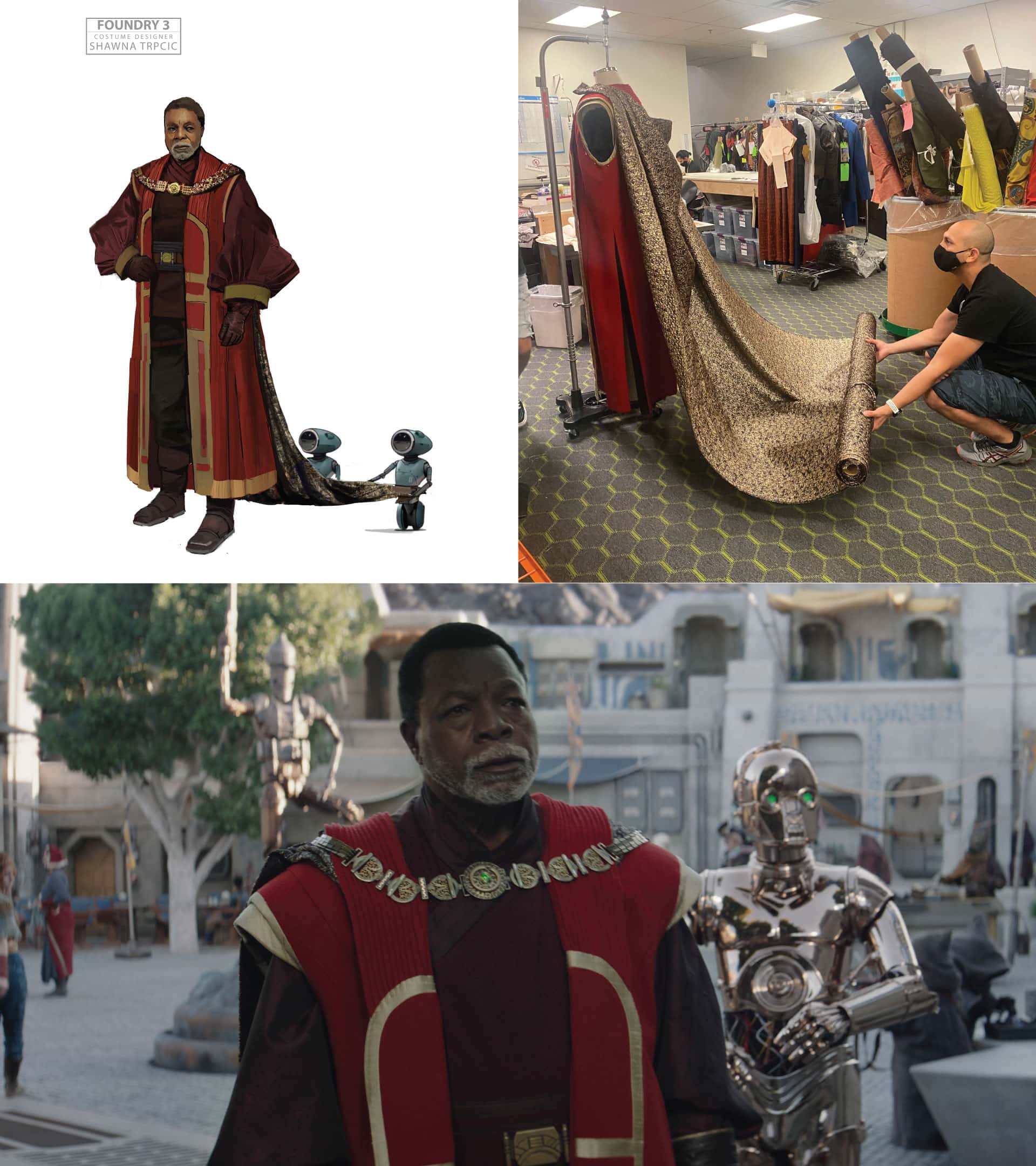
Space Pirates
The first part of Season Three brought space pirates to the show in a fun and visually impactful way. George Lucas used to say that Star Wars is more of a period saga than sci-fi, so that was the foundation for Trpcic’s team. Then of course the first pirate reference was Hondo Ohnaka, who appeared in various mediums, from the animated series to Galaxy’s Edge ride Smuggler’s Run. “[Hondo] was a good place to start, so much of Star Wars is taking a very basic shape but then finding beautiful textured fabrics and then having them aged and dyed and manipulated to tell the story, the journey of those pirates. Then it was of course tapping into Penny Rose’s work on Pirates of the Caribbean, a very Disney, very researched, beautiful film and all the details that she had on Johnny Depp’s costume. Also a little inspiration from Peter Pan for the first mate’s costume [portrayed by Misty Rosas]. It was finding all those childhood joys that you first experienced when you watched pirate movies. I wanted the audience to get lost in the rich details of Gorian Shard (Carey Jones)’s costume with one glance,” Trpcic said.
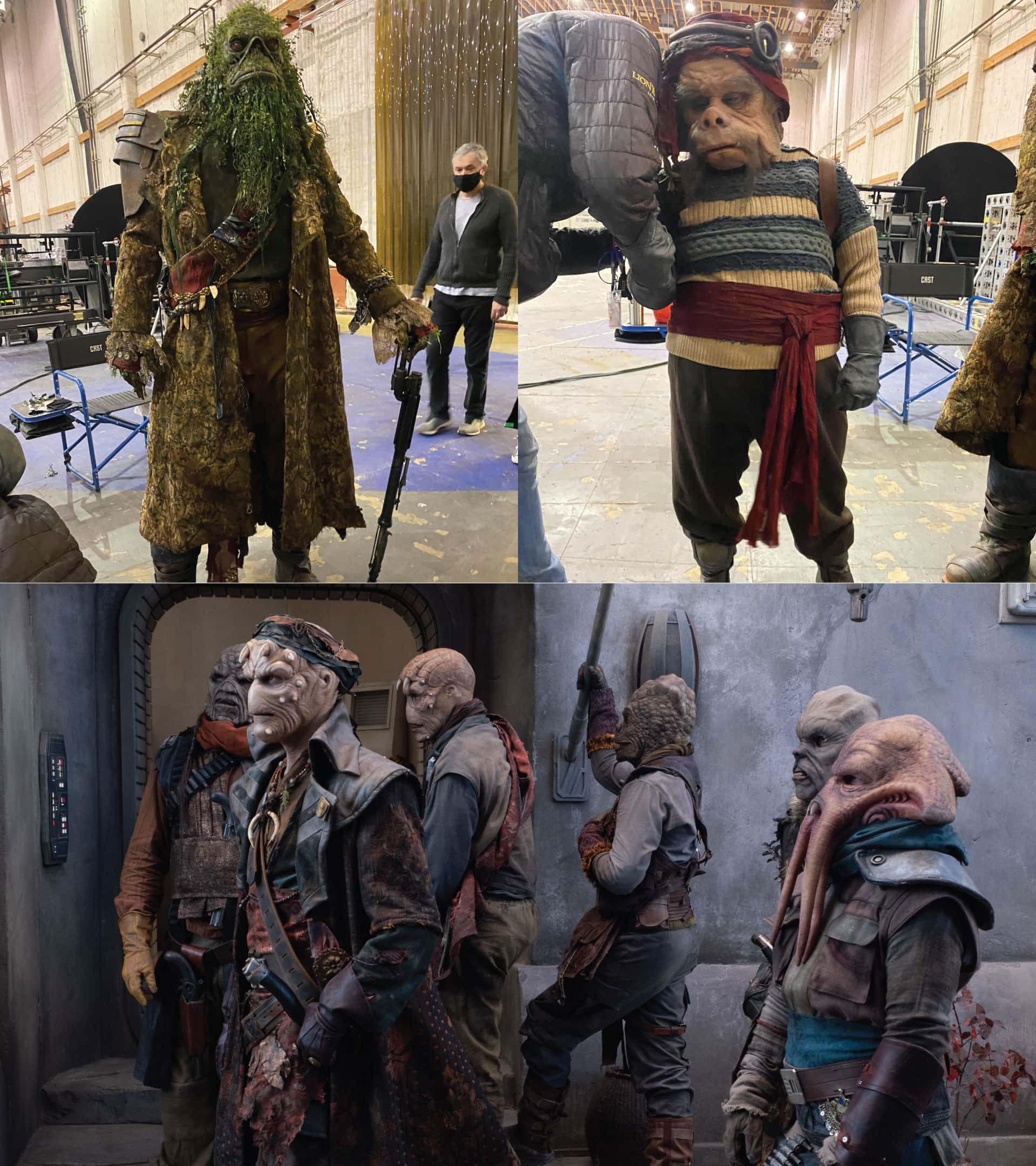
New Republic Amnesty Program
With the Empire mostly gone and the New Republic really going full speed with administering the galaxy, in The Mandalorian Chapter 19: The Convert we got a glimpse of the Amnesty Program to reintroduce former Imperials into society. The similarities between the Imperial and New Republic Amnesty uniforms were intentional, with Shawna Trpcic going back to the manufacturer that produced the wool for the original trilogy. “[The wool] didn’t come in the right (brighter, New Republic) blue, but they were willing to weave it for us. It’s gonna trick your mind. It’s the same wool and pattern, it feels just like the Empire. I did change it up a little bit to sort of freshen up and make it a little bit more innocent, tightening the tailoring on the pants, creating an ambiguity so you don’t quite know who they are,” Trpcic shared.
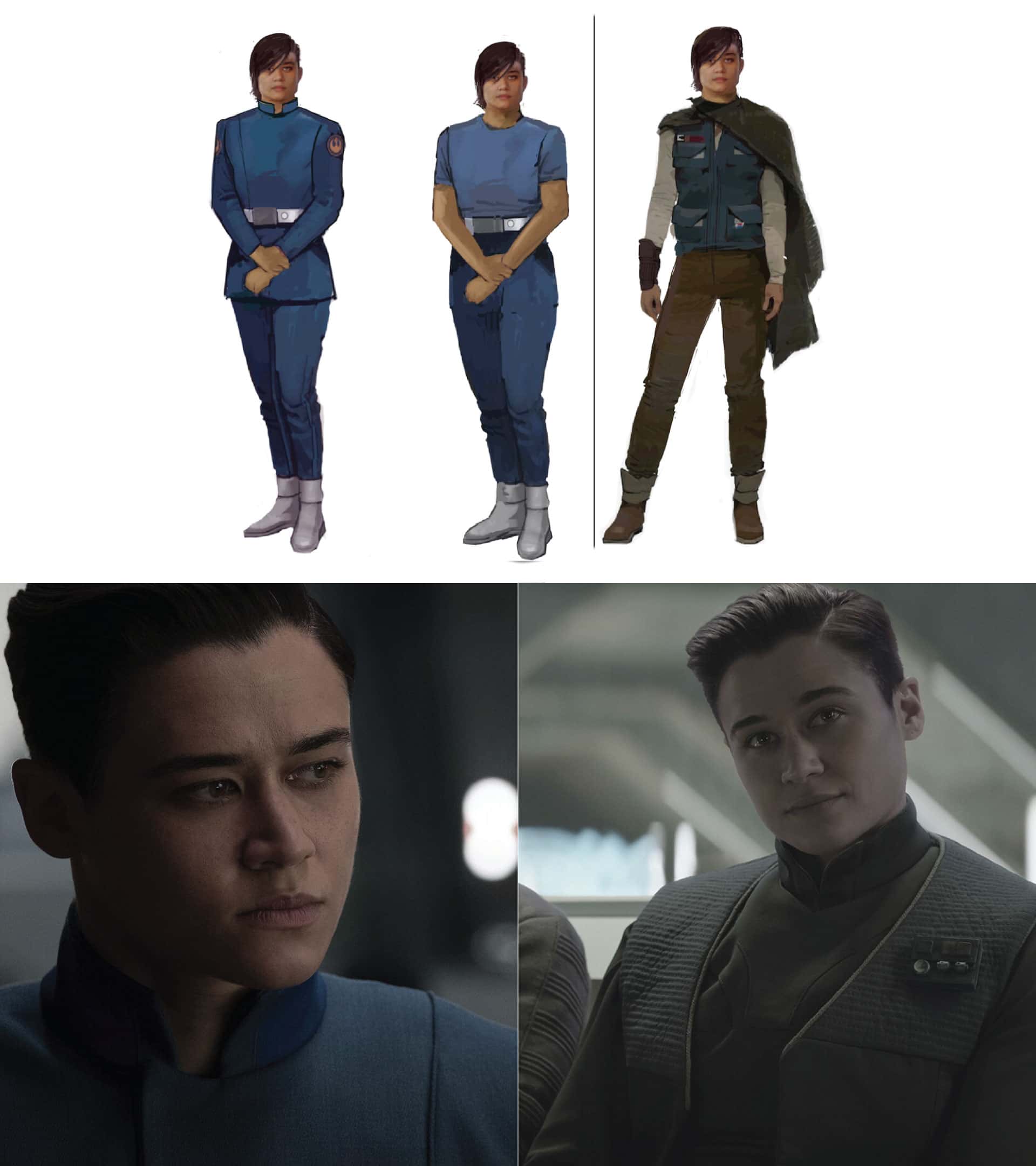
The Hitchcockian episode directed by Lee Isaac Chung saw Elia Kane (Katy O’Brian) and Dr Pershing (Omid Abtahi) sneak aboard a decommissioned Imperial Star Destroyer to steal the necessary materials for the doctor’s cloning research, which since the end of the Galactic Empire has been outlawed by the New Republic. The mystery and noir aspect of Chapter 19 was clearly showcased by the characters’ wardrobe change during their secret outing. Shawna Trpcic reflected, “I was watching some Hitchcock and everybody was so tailored and so clean cut and so well put together and styled that you wouldn’t imagine anything dark happening to them … you saw everybody as pure. So it was even more shocking when they were evil or when something bad happened to them. With Elia Kane and Dr Pershing I wanted to create a very tailored look that would blend in and not stand out; it wouldn’t be the bright richness of Coruscant. And of course, I took some inspiration from Blade Runner because to me Dr Pershing was sort of like Harrison Ford’s character who was a bit lost in the situation but on a mission at the same time; he believed in something, but it wasn’t making sense. He’s working with a woman, but he doesn’t know how to trust her. I was trying to create that suspenseful dynamic instantly. I had to go back to everybody’s memory from Blade Runner, again just sort of tapping into people’s unconsciousness.”
Jedi Master Kelleran Beq
Ahmed Best’s return to Star Wars as Kelleran Beq in The Mandalorian Chapter 20: The Foundling was epic and emotional to say the least, and it’s partly because of the stunning and unique Jedi look. Shawna Trpcic revealed that her collaboration with Best was much more deep and personal than expected, especially in incorporating Afrofuturism to the design: “When I first met Ahmed, Jon had told me that he wanted this Jedi costume to be different, special. When you go to a Jewish temple, the head rabbi has a prayer shawl. So I kind of did a sketch of a Jedi costume with some scroll work on it, but I hadn’t worked out what that scroll work would be.” Trpcic continued, “When Ahmed took off his outer shirt to try on the Jedi robes, he had all this tattooing, and I’m like, ‘What is that? What does that mean?’ He said when he reached a very, very dark time in his life, after all the bullying of Jar Jar Binks, he went to West Africa to rediscover his roots. He came across these Adinkra symbols from the Akan people; they had created them to use radical or reflective symmetry to express deeply symbolic proverbs related to life, death, wisdom and human behavior. And I was like, ‘Oh my gosh, I need to know more about these symbols.’ After getting to know his story, I wanted to honor it because this seemed like a very redemptive moment in Star Wars history. So I researched the symbols and chose the ones that would finish the story that his tattoos had started. I gave it to Luis who was working out the embroidery for me, and he fine tuned it into what you might define as an afrofuturist way of blending them. When we presented it to Ahmed, it was an incredibly emotionally stirring moment.”
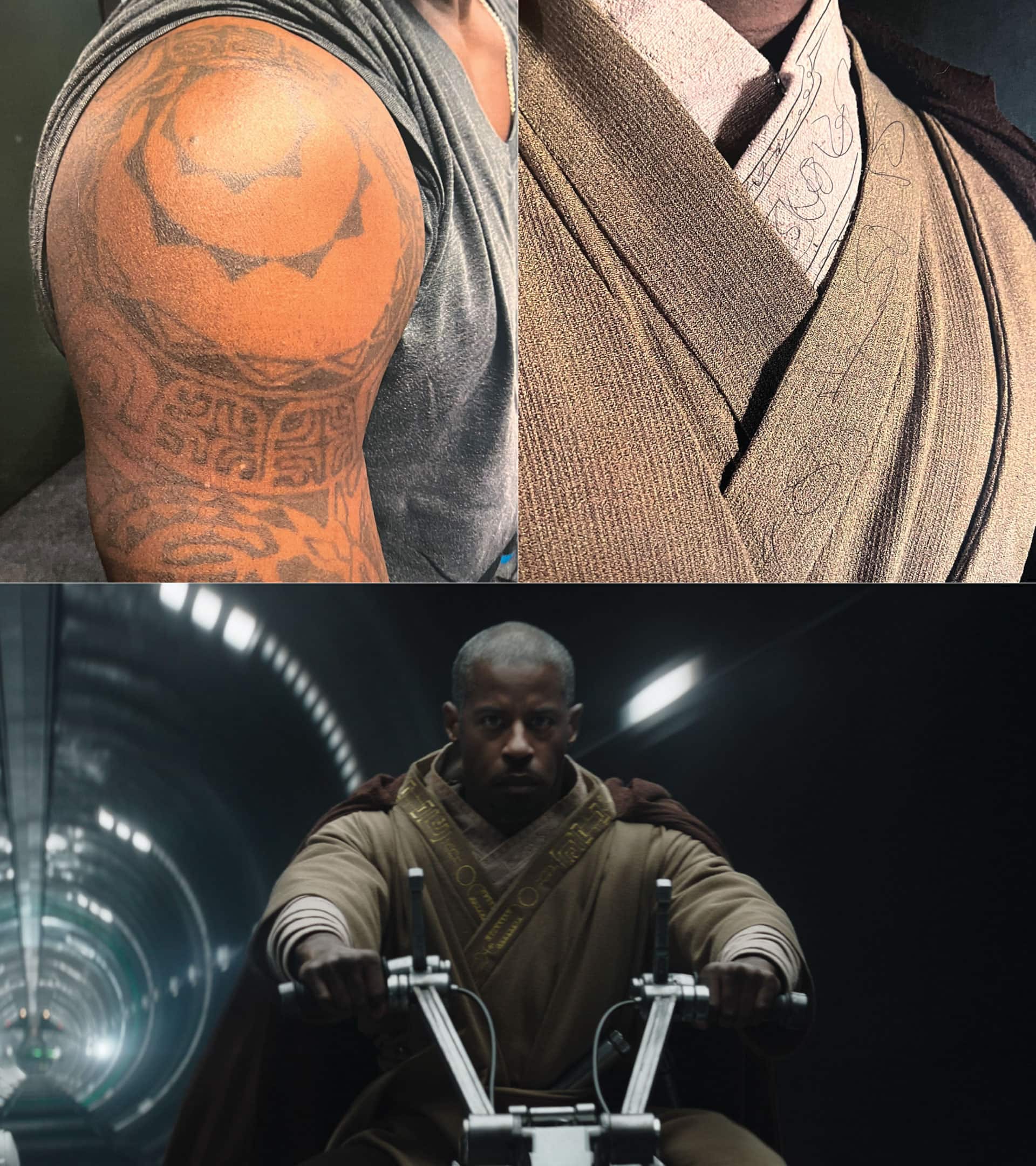
Plazir-15’s Royalty
Chapter 22: Guns for Hire was probably the culmination of The Mandalorian‘s Costume Department’s creativity. The planet Plazir-15 was a visual triumph, full of flamboyance and color. Each background character wore intricately gorgeous costumes that added to the richness of the banquet scene, with its royal hosts stealing the scene in showstopping outfits. Shawna Trpcic discussed the development of Bombardier (Jack Black) and the Duchess (Lizzo)’s costumes: “[Bombardier’s] was actually made out of that same New Republic wool. Although he’s been redeemed and no longer Empire, I wanted a hard armor element for him that’s not on any other New Republic redeemed officers. But then I thought, ‘Well, he’s also a magistrate of this city’ so I gave him the gold chain, and since he is a captain, I gave him the braids of a military … I kind of wanted to throw it all on him. And of course he could carry it off because he’s such a big character.” Then she added about the Duchess, “The way Jon and Bryce [Dallas Howard] described the scene to me was that the episode is sort of like Alice in Wonderland. It’s Din and Bo going down the rabbit hole, tapping back into the innocence that is Star Wars. I created her silhouette to be very Cinderella because she has redeemed Bombardier. And of course [Lizzo] carried it off. Then Maria [Sandoval], our hair stylist, came up with this African weave that was inspirational, so lavish and joyous.
But the Duchess’ breathtaking dress and headpiece wasn’t enough for showrunner Jon Favreau, who wanted to add one more angelic detail to the character. Originally, the halo around the character was going to be fully CGI; however, Trpcic pushed for a practical effect to stay loyal to the show’s time period, the Original Trilogy. “We built the halo, and I had Joan [Lee] push it around on a dolly behind Lizzo because we wanted it to move as if it were a droid. My poor costumer had to dress in all gray and run around Lizzo and try to predict where she was gonna go to keep this halo centered perfectly behind her, and then visual effects highlighted it and lit it up.”
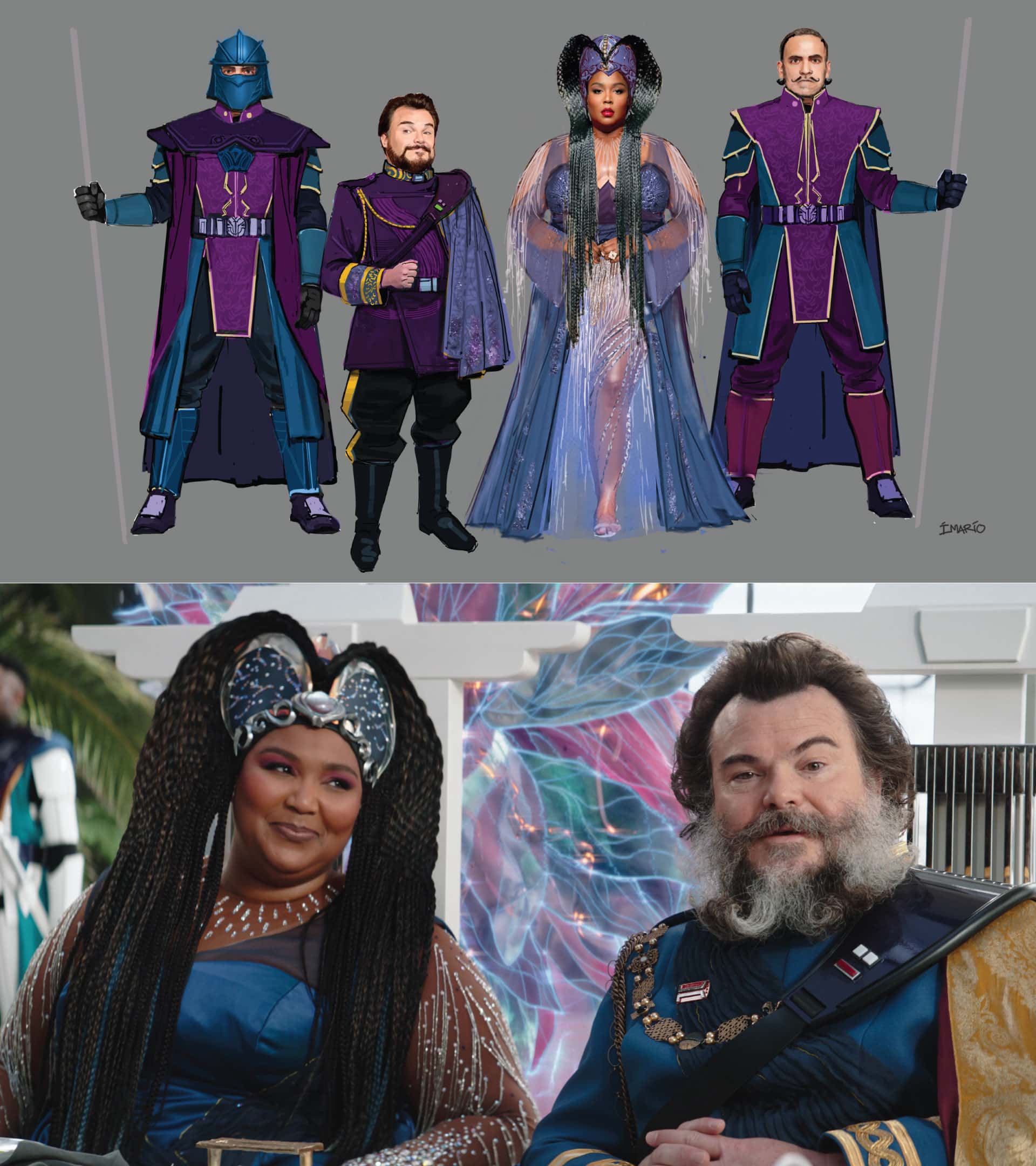
The Mandalorians
Season Three had an unprecedented number of Mandolalorians on screen, ninety to be exact, each and every one with unique designs. “The Night Owls are very militaristic; the Coverts have lots of different pieces because they’ve fought battles and wars; then the Survivors are trying to recreate the armor in a religious fashion out of leathers and found objects,” Trpcic explained. She then reflected upon the momentous task in creating such an ensemble of costumes and really focusing on each Mandalorian’s story: “Behind every nick in the paint and every piece of armor, there’s a story. A good example is with Charles Parnell’s character, the captain of the Survivors. He had a cloth strap going across his chest with a leather circle. When I was doing the fitting with Charles, I asked him, ‘As a character surviving the apocalypse, what is the one thing you would have grabbed to carry with you?’ And he said, ‘Well, I would take a photograph of my family.’ And I said, ‘There’s no pictures in Star Wars, so what would you take instead?’ And he’s like, ‘I don’t know, I would find a way to carry their image with me.’”
Trpcic and her team started playing around with that idea and came up with a nicked out image of the character’s family on a piece of leather torn off from his warrior costume, bound and strapped on his heart. “When I presented that to Charles he’s like, ‘Nobody will ever see it. Nobody will ever know this story.’ I said, ‘But you will, it’s important to me that you will, that this is your story.’ If you watch the episode, his chest is always proud and always strong and that strap is always right there.” She finally added, “It’s this idea that helps make these characters unique and for us to feel and care for them as individuals. It’s not just a bunch of silver robots in armor; I wanted to bring humanity to what could be very closed off cold characters, but instead it opens them up to warmth and acceptance.”
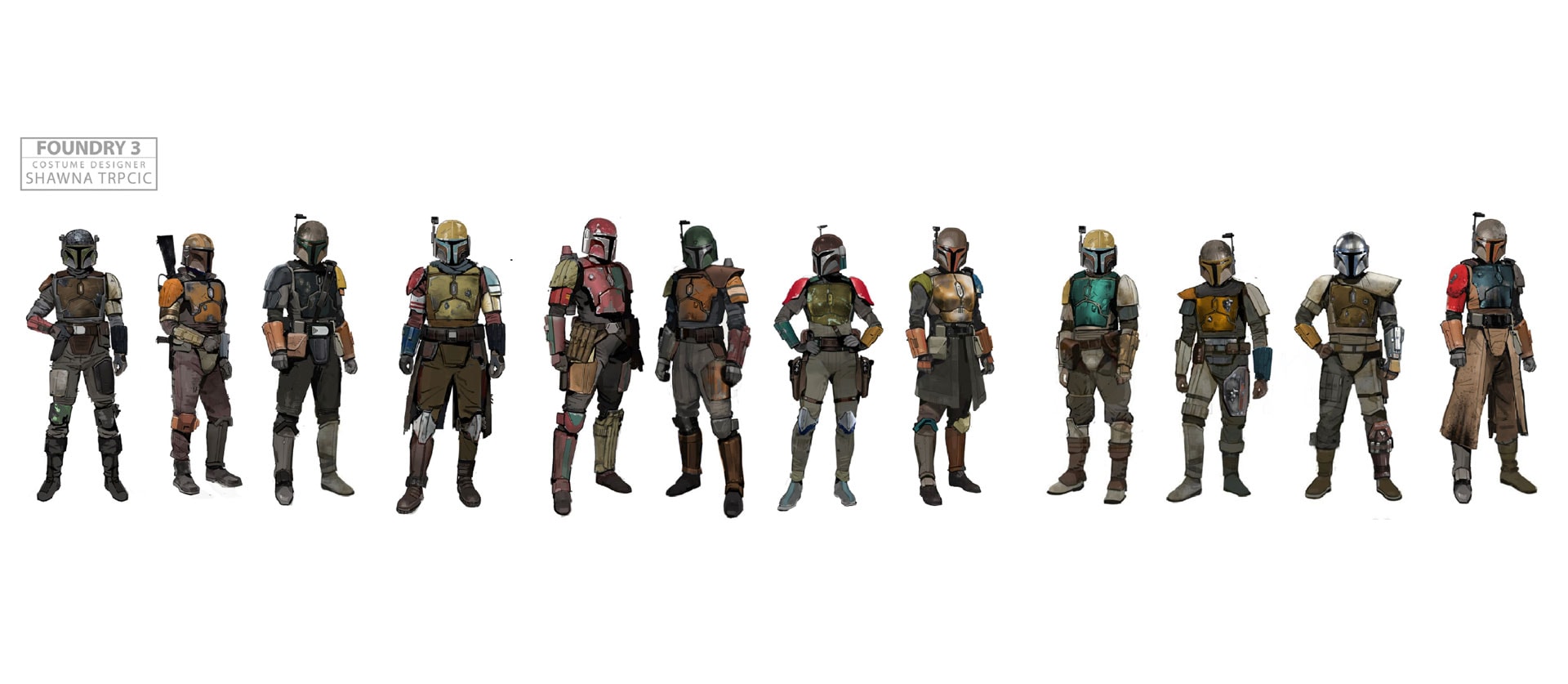
Shawna Trpcic ended the interview with one final thought about the incredible work her and her team have accomplished in Season Three of The Mandalorian: “We got to reinvent Jedi; we got to reinvent Mandalorians. I’ve been blessed with taking all these standard characters and creating a new dimension to them.”
For more behind the scenes and to stay current with Shawna Trpcic’s projects, make sure to follow her on Instagram.
